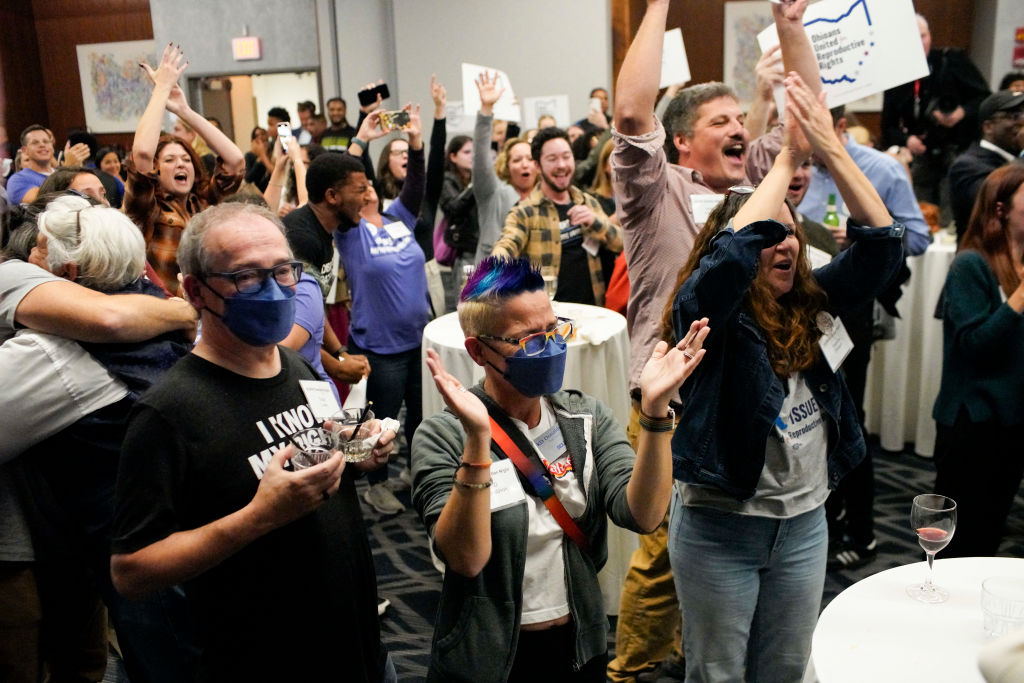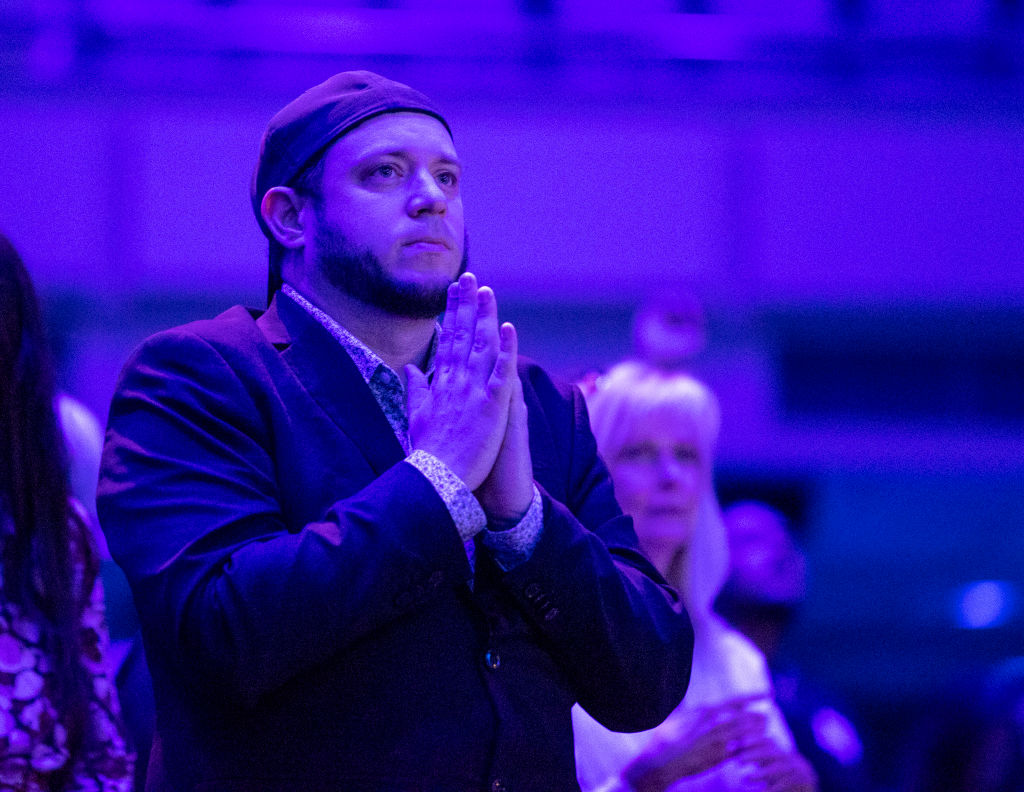In cities and states across the U.S., anti-abortion activists—from Ohio to Texas—continue toward their end goal: a nationwide ban on abortion.

Abortion won big in Ohio last month, when 57 percent of voters approved Issue 1—a citizen-initiated referendum to write protections for reproductive freedoms, including abortion, into the state constitution. The victory came after a long and arduous fight. Banding together as Ohioans United for Reproductive Rights (OURR), activists pushed back against all the Republican measures designed to defeat the ballot— including a failed attempt to amend the state constitution to raise the threshold vote for approving future amendments from a simple majority to 60 percent of the voters.
After months of denial, Secretary of State Frank LaRose finally admitted that the attempted maneuver was, in fact, “100 percent about keeping a radical pro-abortion amendment out of our constitution.”
In light of this resounding win, one might think the abortion issue had at last been put to rest in Ohio. Instead, it’s bubbling up in the city of Lebanon—whose elected officials are currently debating whether or not to retain its status as a sanctuary city for the unborn.
In June of 2019, the all-male city council in Waskom, Texas, unanimously approved a municipal ordinance making the tiny town the nation’s first sanctuary city for the unborn. This marked the first step in the campaign of Mark Lee Dickson—founder of the Sanctuary Cities for the Unborn Initiative and director of Right to Life East Texas—aimed at “protecting our cities by outlawing abortion, one city at a time.”
Since Waskom, under Dickson’s leadership, more than 50 localities in Texas have enacted municipal sanctuary city ordinances, and the campaign has been extended into six states.
Underscoring Dickson’s impassioned commitment to the ultimate goal of a national abortion ban, he recently tweeted, “During the Holocaust, the Nazis took innocent Jews to the gas chambers to be killed. In today’s abortion Holocaust, abortion traffickers (Nazis) are taking unborn children in the mother’s wombs (innocent Jews) to the abortion facilities (gas chambers) to be killed.”
During the Holocaust, the Nazis took innocent Jews to the gas chambers to be killed. In today's Abortion Holocaust, abortion traffickers (Nazis) are taking unborn children in their mother's wombs (innocent Jews) to the abortion facilities (gas chambers) to be killed.
— Mark Lee Dickson (@MarkLeeDickson) November 16, 2023
In 2021, declaring that the idea “came from nowhere but God,” Lebanon became the first municipality in Ohio to approve a sanctuary city ordinance outlawing abortion, which it characterized as a “murderous act of violence.” As Ohio’s sole self-proclaimed “abortion-free” zone, in the wake of Issue 1, Lebanon has been thrust into the limelight as a site of anti-abortion resistance.
Lebanon’s city council initially appeared ready to concede defeat and rescind the ordinance, in light of its near-certain unconstitutionality. However, as anti-abortion activists began vetting strategies to challenge the successful referendum, its members reversed course. Doubling down on the “anti-abortion stance that led Lebanon to become a Sanctuary City of [sic] the Unborn” in the first place, the council approved a resolution declaring that “unborn children are legal and constitutional persons who are entitled to the equal protection of the laws.”

Not one to stay out of these struggles, Dickson is taking the lead in encouraging the council to amend its sanctuary city ordinance so that rather than banning abortion, it instead would be tethered to the moribund 1873 anti-obscenity federal Comstock law, which “makes it a felony to send or receive any “article or thing designed, adapted or intended for producing abortion.” As I previously wrote, his effort to resurrect the Victorian-era law raises the specter of a backdoor national abortion ban by way of blocking the conveyance of essential medications, supplies and equipment—a threat that should not be discounted as the mere fanciful dream of fanatics, particularly given the current composition of the Supreme Court.
But, not all anti-abortion activists in Ohio agree with Dickson’s approach. Others want the ordinance to be preserved in its current iteration, as part of their legal strategy for challenging Issue 1, which one leader claims is invalid because “God-given rights cannot be repealed.”
As Amy Littlefield wrote, the “turf war” in Ohio showcases how the “losing streak at the ballot is prompting top anti-choice activists to trot out a variety of anti-democratic schemes to prevent the expansion of abortion access”—including Dickson’s resolute determination to continue carving out sanctuary cities in abortion-protective states, en route to realizing his ultimate dream of a national abortion ban.
Up next:
U.S. democracy is at a dangerous inflection point—from the demise of abortion rights, to a lack of pay equity and parental leave, to skyrocketing maternal mortality, and attacks on trans health. Left unchecked, these crises will lead to wider gaps in political participation and representation. For 50 years, Ms. has been forging feminist journalism—reporting, rebelling and truth-telling from the front-lines, championing the Equal Rights Amendment, and centering the stories of those most impacted. With all that’s at stake for equality, we are redoubling our commitment for the next 50 years. In turn, we need your help, Support Ms. today with a donation—any amount that is meaningful to you. For as little as $5 each month, you’ll receive the print magazine along with our e-newsletters, action alerts, and invitations to Ms. Studios events and podcasts. We are grateful for your loyalty and ferocity.





